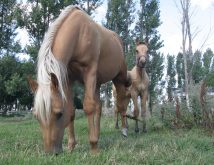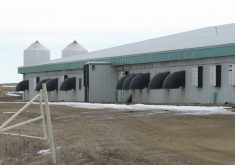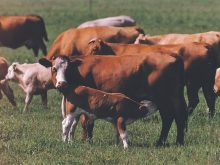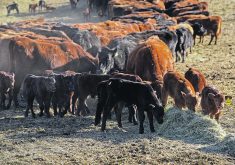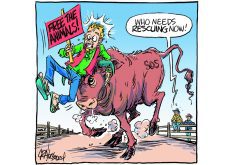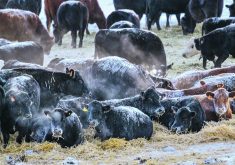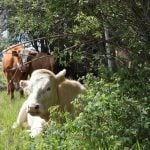The two most costly health problems in the feedlot industry are respiratory disease and footrot. The third, surprisingly, is buller steer syndrome.
The aberrant behaviour associated with buller steers has an impact on steer well-being and poses a financial burden to feedlot operators. Buller steers are 3.2 times more likely to die than non-buller steers and 2.5 times more likely to be reclassified as sick.
The buller steer syndrome is a behavioural anomaly in which some steers repeatedly mount another steer. The steer being mounted is the buller.
Read Also

Veterinary college expands to meet need
Alberta government invests nearly $70 million at University of Alberta to double student capacity of veterinary program to address provincial shortage of professionals in the field to aid many sectors including agriculture for livestock.
The number of buller steers in a pen of feedlot cattle in Western Canada ranges from zero to 11 percent. The average incidence is between two and four percent.
Buller steers lose hair over their rumps and develop swellings from trauma to their tailheads. In extreme cases, a buller will become exhausted because it is never left alone. Some bullers suffer from broken bones, and a few even die from injuries sustained during mounting.
What turns a steer into a buller? Many factors have been implicated – the use of anabolic agents, improper implantation, mud or dust in the pens, disease, group size, late or improper castration and a host of others factors related to the management of feedlot animals.
The impact of anabolic agents on the buller syndrome has been widely studied. In the late 1970s, the incidence of bullers was about 1.5 percent when the only anabolic agent used was diethylstilbestrol, or DES. In 1971 the amount of DES in feed doubled and the level shot up to 2.09 percent. When anabolic implants were introduced, buller incidence rose again, to 3.67 percent.
Although the use of hormones became more common during this time, the number of animals per pen also rose. Studies have confirmed that putting more animals in a pen increases the incidence of bullers. Alternatively, offering steers more individual space in a pen decreases the incidence. Both stocking density and hormone administration appear to have an impact on the incidence of buller syndrome.
The overriding question is what makes a buller attractive to other animals in the pen? Urine tests show that the levels of the sexual hormones, estrogen and testosterone, are higher in buller steers than in non-buller steers. This difference becomes negligible once a buller has been isolated for three days. It appears that rising hormone levels in a buller could occur in response to being ridden rather than being the reason for a steer to attract riders and become a buller.
Mounting behaviour is often thought of as a sexual behaviour but typical sexual behaviours such as lip-curling, penile erections and intromission are not exhibited by riders. Riding is therefore more likely a way for a steer to exert dominance over another steer.
Social hierarchies between cattle appear to play a role in the generation of bullers in a feedlot setting.
Dominant steers are naturally more aggressive than other steers so they like to establish their dominance. Not surprisingly, when steers first arrive at a feedlot and are penned together, the number of bullers is at its highest. When animals are regrouped, the number of bullers rises again as new pen members establish their social status.
There is also evidence that suggests the expression of social dominance occurs more often in pens with large numbers of animals.
When a buller is spotted, it should be removed from the pen and checked. Once it has rested and recovered, it can be returned to the pen and should be monitored closely because one-third of steers will exhibit buller behaviour again.


